Affiliate disclosure: This post may contain affiliate links. Please see our Privacy Policy.
Edible wild plants include more than just the occasional harvest of wild blackberries and dandelion greens. Serious foragers seek out all manner of unique edible wild foods, from greens and herbs, to berries, roots, bark, pollen, mushrooms, and more.
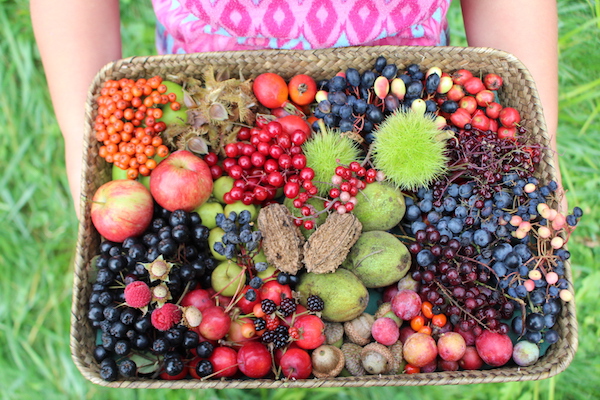
Table of Contents
- List of Edible Wild Plants (Mushrooms too!)
- Edible Weeds and Medicinal Herbs
- Edible Wild Berries and Fruit
- Edible Wild Nuts
- Wild Edible Roots and Tubers
- Edible Freshwater Water Plants
- Edible Sea Vegetables
- Wild Spices
- Wild Grain and Seeds
- Wild Edible Pollen
- Edible Wild Mushrooms
- Edible Lichen
- Foraging Guides and Lists
A decade ago, I was working in a soul-sucking 9 to 5 desk job, and every single day after work, I’d slip on my boots and head out foraging. Sometimes, I’d take a long lunch and hike the trails around my non-descript office building, searching for choice wild edible plants (and I found plenty).
I remember one time I got back just in time to slip back into my professional shoes, and then head right into giving an hour-long presentation to a room full of department VP’s at my large company. No one seemed to notice that my hands were stained with wild elderberry juice that wouldn’t wash off, or at least they were polite enough not to mention it.
Hazards of foraging…but I had my priorities.
I knew I couldn’t give presentations forever, and 10 years ago, I traded in my corporate skirts for hiking pants, and I haven’t looked back.
True, there are a lot more ticks out in the woods than in an office building, but there’s also freedom, fresh air, and an unbelievable sense of accomplishment that comes from finding a new edible wild plant that’s been on your bucket list forever.
Each year, I try to find and identify as many new wild plants as possible, and I usually add a dozen or more to my growing list. Still, there are so many I’ve yet to find, and I’ve decided to put my “foraging bucket list” all in one place.
I know I’m not the only passionate forager, treating wild plants like Pokemon and trying to “catch them all.” Hopefully, this list is useful to others as well.
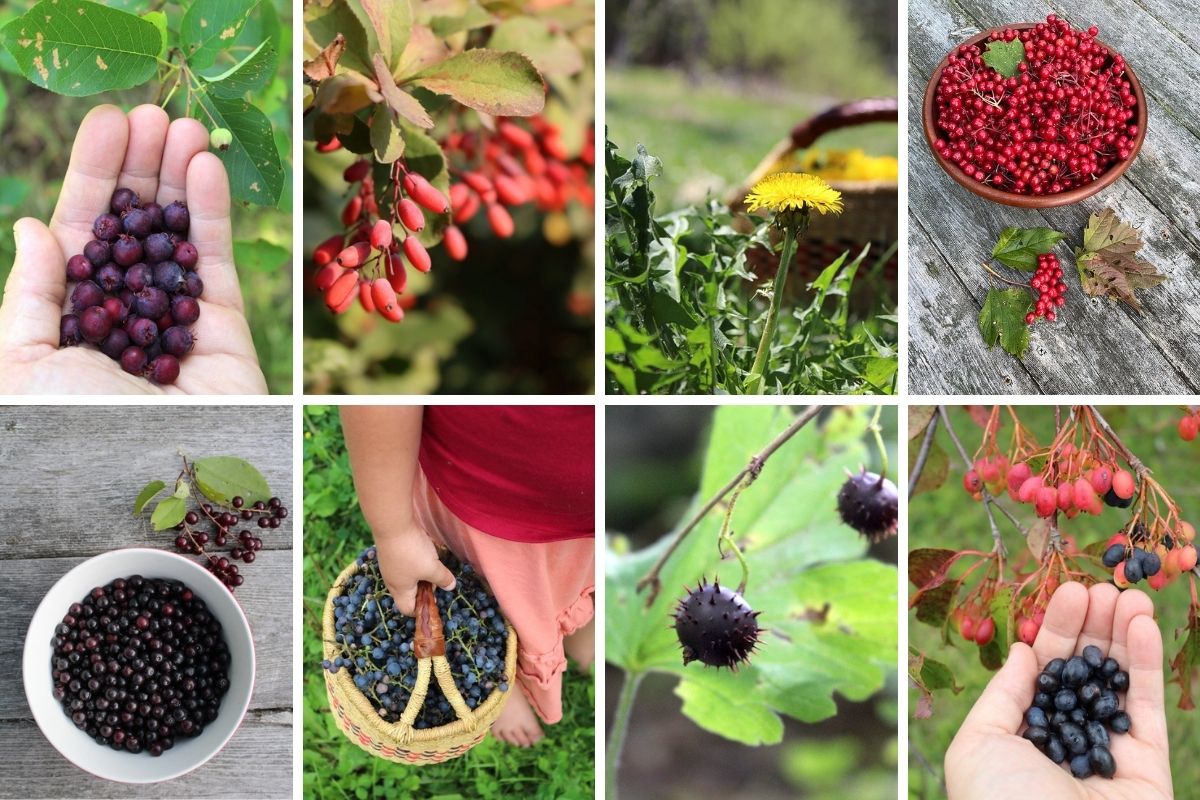
I’m hoping to use this as the start of a dialogue between myself, and you the readers, my fellow wild plant lovers.
Though I know many wild edible plants, it’s just the beginning of what’s available in the abundant world we inhabit. I’m sure I’ve missed MANY choice wild edibles, and I’d love it if you’d leave me a note in the comments so I can add them to the list (for myself, and everyone else who chooses to use this as a resource).
This list tries to cover both edible and medicinal wild plants, since there’s considerable overlap between the two groups. Many tasty edible plants also happen to be consumed for medicinal benefits, food is medicinal after all. Be aware that some of them are only used topically for medicine, and should not be consumed. Be sure to do your research on how each of these plants is used before harvesting.
I’ve already found most of these plants, and written up foraging guides on quite a few of them. If you see links within the text, that’ll take you to my guide to identifying and using that plant or mushroom. I’m hoping to write up 52 more this year, one a week…it’s an ambitious goal and if I make 30 I’ll call it a win.
Just about all of these plants are located in the Northeast, though most are common enough that they’re available throughout most of the United States (and elsewhere).
List of Edible Wild Plants (Mushrooms too!)
I’ve broken this list of edible wild foods into categories to make it a bit easier to digest.
Some categories are only a starting point, as there are literally hundreds of edible wild grains and seeds, and I only list a handful. I’d encourage you to help fill in the gaps by leaving me a note in the comments, and I’ll add each one until together we’ve made a much more comprehensive list. (At initial publishing, I’ve already got 180 species…so it’s a great start!)
Here are my categories (in order, so you can scroll to the one you’d like):
- Weeds and Medicinal Herbs
- Berries and Fruit
- Nuts
- Roots and Tubers
- Freshwater Plants
- Sea Vegetables
- Spices
- Grains and Seeds
- Pollen
- Wild Mushrooms
- Lichen
If you’re new to foraging, I’d strongly recommend getting a few good foraging guidebooks to get you started. My absolute favorites are by Sam Thayer, and all three of his are exceptional. I’d also recommend The Forager Chef’s Book of Flora, and anything by Pascal Baudar. As to courses, if you can find a local course or guide that’s always ideal, but lacking that hands-on option, I’d strongly recommend the online courses by the Herbal Academy of New England.
They have a Botany and Wildcrafting Course that’s perfect for beginners and gives you a solid foundation into plant identification. They also have a mushroom course that will teach you how to find and identify dozens of types of common edible and medicinal mushrooms.
Edible Weeds and Medicinal Herbs
There are literally hundreds of species of edible weeds and wild medicinal herbs here in New England alone, so this is just a start.
Help me out here and leave me some in the comments to add to my list.
- Bittercress (Cardamine hirsuta)
- Black-Eyed Susan (Rudbeckia hirta)
- Burdock (Arctium sp.)
- Chicory (Cichorium intybus)
- Chickweed (Stellaria media)
- Claytonia (Claytonia perfoliata)
- Cleavers/Bedstraw (Galium sp.)
- Clover (Trifolium sp.)
- Comfrey (Symphytum sp.) – Topical Use Only
- Curly Dock (Rumex sp.)
- Dandelion (Taraxacum officinale)
- Garlic Mustard (Alliaria petiolata)
- Henbit (Lamium amplexicaule)
- Herb Robert (Geranium robertianum)
- Himalayan Balsam (Impatiens glandulifera)
- Horsetail (Equisetum sp.)
- Japanese Knotweed (Reynoutria japonica)
- Jewelweed (Impatiens capensis)
- Kudzu (Pueraria montana)
- Lady’s Thumb (Persicaria maculosa)
- Lambs Quarter (Chenopodium album)
- Mallow Species (Althaea sp.)
- Melilot (Melilotus sp.)
- Milkweed (Asclepias syriaca)
- Mugwort (Artemisia vulgaris)
- Mullein (Verbascum sp.)
- Pigweed (Amaranthus sp.)
- Pineapple Weed (Matricaria discoidea)
- Plantain (Plantago sp.)
- Purple Dead-nettle (Lamium purpureum)
- Purslane (Portulaca oleracea)
- Queen Anne’s Lace (Daucus carota)
- Quickweed (Galinsoga parviflora)
- Self Heal (Prunella vulgaris)
- Shepherd’s Purse (Capsella bursa-pastoris)
- Speedwell (Veronica persica)
- St. Johns Wort (Hypericum perforatum)
- Stinging Nettles (Urticia dioica)
- Thistle (Cirsium sp.)
- Valerian (Valeriana officinalis)
- Violets (Viola sp.)
- Watercress (Nasturtium officinale)
- Wood Sorrel (Oxalis sp.)
- Wild Bergamot (monarda fistulosa)
- Wild Lettuce (Lactuca virosa)
- Wild Mint (Mentha sp.)
- Yarrow (Achillea millefolium)
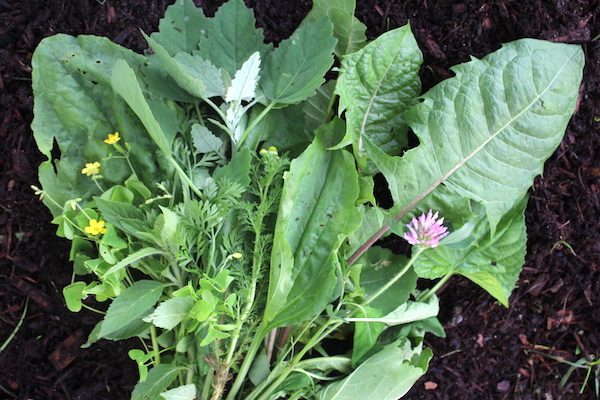
Edible Wild Berries and Fruit
My family is particularly passionate about wild fruit, and it’s easy to be when you’re foraging with kids. It’s a lot easier to get a toddler excited about going out to forage wild raspberries than it is to get them to dig burdock roots…
I can’t blame them, I love sweet wild fruits and berries as much as anyone.
- Apples and Crabapples (Malus sp.)
- Arctic Raspberry (Rubus arcticus)
- Aronia Berries or Chokeberries (Aronia sp.)
- Autumn Olive (Elaeagnus umbellata)
- Barberry (Berberis sp.)
- Bearberry (Arctostaphylos uva-ursi)
- Blackberry (Rubus sp.)
- Blackcaps or Black Raspberries (Rubus occidentalis & R. leucodermis)
- Black Cherry (Prunus serotina)
- Blueberry (Vaccinium sect. Cyanococcus sp.)
- Buffalo Berry (Shepherdia sp.)
- Bunchberry (Cornus canadensis)
- Chokecherry (Prunus virginiana)
- Cloudberry (Rubus chamaemorus)
- Cranberry (Vaccinium Subgenus Oxycoccus sp.)
- Crowberry (Empetrum nigrum)
- Currants (Ribes sp.)
- Dewberries (Rubus flagellaris)
- Elderberry (Sambucus nigra)
- Fairy Bell (Prosartes sp.)
- Gooseberry (Ribes uva-crispa)
- Grape (Vitus sp.)
- Groundcherry (Physalis sp.)
- Guelder Rose, Highbush Cranberry or Squashberry (Viburnum oplus, V. trilobum or V. edule)
- Hackberry (Celtis occidentalis)
- Hawthorn (Crataegus sp.)
- Huckleberry (Gaylussacia sp. and Vaccinium sp.)
- Hobblebush (Viburnum lantanoides or V. alnifolium, V. grandifolium)
- Mayflower (Maianthemum canadense)
- Mock Strawberry or Indian Strawberry (Duchesnea indica)
- Mountain Ash or Rowan Berry (Sorbus sp.)
- Mulberry (Morus sp.)
- Nannyberry or Sheepberry (Viburnum lentago)
- Oregon Grape(Mahonia aquifolium)
- Partridgeberry (Mitchella repens)
- Passion fruit (Passiflora sp.)
- Pawpaw (Asimina sp.)
- Persimmon (Diospyros sp.)
- Pin Cherries (Prunus pensylvanica)
- Plums (Prunus americana)
- Prickly Pear Cactus (Opuntia sp.)
- Raspberry (Rubus sp.)
- Red Blackberries (Rubus pubescens)
- Rose Hips (Rosa sp.)
- Salal (Gaultheria shallon)
- Salmonberry (Rubus spectabilis)
- Saskatoons or Serviceberries (Amelanchier Sp.)
- Sea Buckthorn (Hippophae rhamnoides)
- Solomon’s Plume or False Solomon’s Seal (Maianthemum racemosum)
- Strawberry (Fragaria sp.)
- Teaberry (Gaultheria procumbens)
- Thimbleberry (Rubus parviflorus and R. odoratus)
- Wineberry (Rubus phoenicolasius)
- Witherod or Northern Wild Raisin (Viburnum cassinoides or V. nudum)
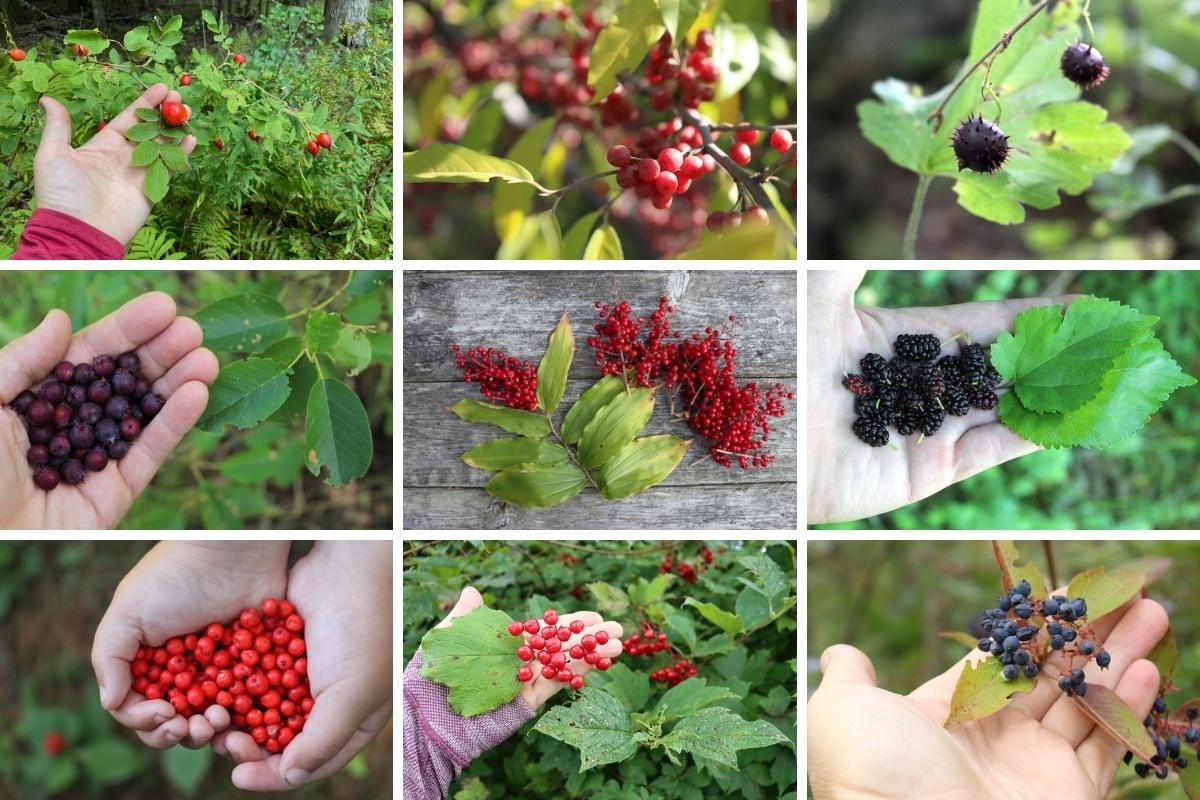
Edible Wild Nuts
Nuts are more exciting than wild fruit in some ways, at least to me. They’re delicious for one, but they also store well.
If you’re hoping to enjoy a wild foraged diet year-round, nuts are a great way to keep wild foods on your plate in the winter months.
It also helps that they’re protein-rich, which is lacking in most other wild-foraged crops (unless you’re foraging with a deer rifle…).
- Acorns (Quercus sp.)
- Beechnuts (Fagus sp.)
- Black Walnut (Juglans nigra)
- Butternut (Juglans Cinerea)
- Chestnut (Castanea sp.)
- Hazelnut (Corylus sp.)
- Hickory Nuts (Carya sp.)

Wild Edible Roots and Tubers
While leafy greens are tasty and the perfect treat in spring after a long winter on stored food, the roots and tubers are where the real calories are found. These starchy parts of plants are where they store their nutrition (and sugars) for the next growing season.
You’ll find a lot more calories in potatoes than lettuce from the garden, and the same is true if you’re foraging.
As with any wild-foraged crop, there are plenty of toxic roots and tubers, so be careful here too. Wild carrots may seem simple enough, but they do have a deadly toxic look alike.
- Arrowhead (Sagittaria latifolia)
- Bistort (Polygonum bistortoides)
- Bull Thistle (Cirsium vulgare)
- Burdock (Arctium sp.)
- Cattails (Typha sp.)
- Chickory (Cichorium intybus)
- Chufa (Cyperus esculentus)
- Cucumber Root (Medeola virginiana)
- Dandelion (Taraxacum officinale)
- Daylily (Hemerocallis sp.)
- Evening Primrose (Oenothera sp.)
- Garlic Mustard (Alliaria petiolata)
- Ground Nut (Apios americana)
- Horseradish (Armoracia rusticana)
- Lesser Celandine (Ficaria verna)
- Lotus, American (Nelumbo lutea)
- Pignut (Conopodium majus)
- Ramps or Wild Leeks (Allium tricoccum)
- Sego Lily (Calochortus nuttallii)
- Shepherd’s Purse (Capsella bursa-pastoris)
- Spring Beauty (Claytonia lanceolata)
- Solomon’s Seal (Polygonatum sp.)
- Sunchokes or Jerusalem Artichokes (Helianthus tuberosus)
- Trout Lily (Erythronium pudica)
- Wild Carrot or Queen Anne’s Lace (Daucus carota)
- Wild Parsnip (Pastinaca sativa)
- Wild Potato (Orogenia linearifolia)
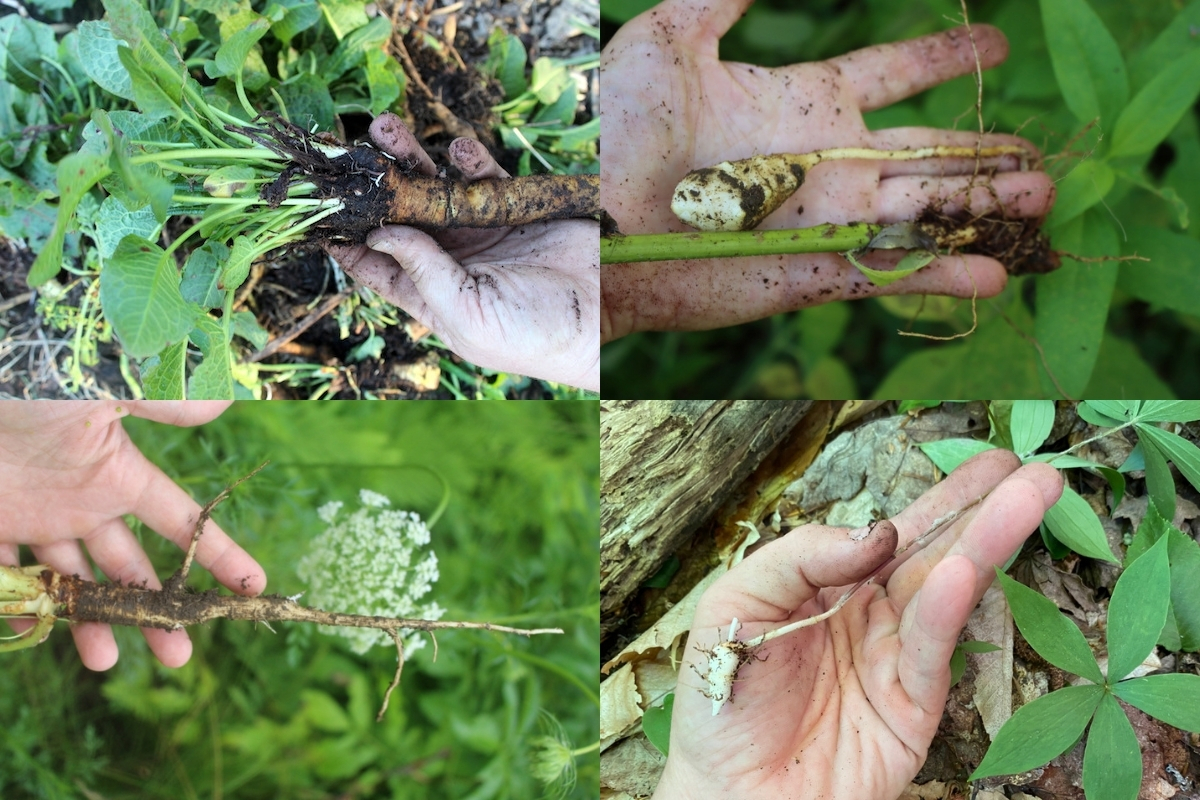
Edible Freshwater Water Plants
Vermont is a very water-rich state, and with two little ones, I’m often down near the edge of ponds in the summertime. Though there are many edible water plants in tropical locations, there are still quite a few you can find in temperate regions.
All of these edible water plants are available in the Northeast, and many other locations in the US as well.
- Arrowhead, Duck Potato or Wopato (Sagittaria latifolia)
- Cattail (Typha sp.)
- Lotus, American (Nelumbo lutea)
- Pickerelweed (Pontederia cordata)
- Sweet Flag (Acorus calamus)
- Watercress (Nasturtium officinale)
- Wild Rice (Zizania sp.)

Edible Sea Vegetables
If you’re near the coast, there are quite a few coastal vegetables you can harvest from the sea. You may already know about seaweed, but there are of course many more that have been harvested by coastal peoples for centuries.
I actually hadn’t thought about these much, until I saw a post from Black Forager where she’s harvesting all manner of sea vegetables on a trip to the Maine coast.
Since we live in a land-locked state, I don’t often get the opportunity for ocean foraging. These are all yet to be checked off my bucket list…and the real list of options is definitely much longer. (Please, coastal foragers, enlighten me! Leave your favorites in the comments.)
- Dulse (Palmaria palmata)
- Irish Moss (Chondrus crispus) – Actually a species of red algae
- Sea Kale (Crambe maritima)
- Sea Lettuce (Ulva sp.)
Wild Spices
Sometimes you’re foraging for flavor more than calories, and there are plenty of wild seasoning to keep things interesting in the kitchen.
I’ve found this guide to substituting wild spices for conventional alternatives to be quite helpful, and it’s a great place to start if you’ve just harvested your first wild seasonings.
- Spicebush (Lindera benzoin)
- Spruce Tips (and other evergreen tips)
- Staghorn Sumac (Rhus typhina)
- Sweet Cicely (Myrrhis odorata)
- Sweet Woodruff (Galium odoratum)
- Wild Ginger (Asarum canadense)
- Wild Fennel (Foeniculum vulgare)
- Wild Mint (Mentha sp.)
- Wintergreen or Teaberry (Gaultheria procumbens)
- Wood Avens (Geum urbanum)
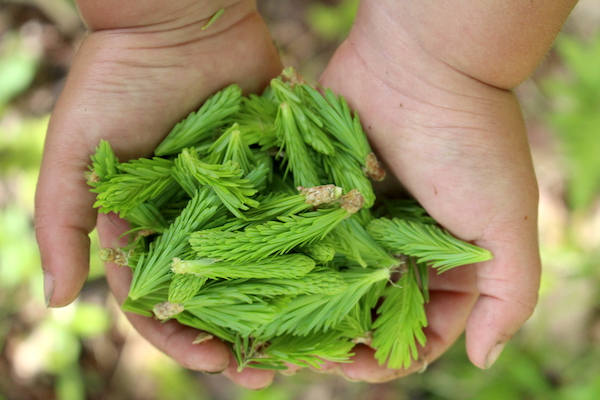
Wild Grain and Seeds
While cultivated grains and seeds make up the majority of our diets these days, wild grains and seeds have added variety and nutrition to people’s diets for millennia.
Goosefoot seeds were mixed with other wild grains in the stomach of Dätgen Man, a body found preserved in a Danish bog from 300 BC, as well as several other preserved bog bodies throughout history. At that point, there’s evidence that wild grains were already a large part of our diet.
Acorns were processed more than 40,000 years ago, and grains are much easier to eat (without the leaching required to turn acorns into edible acorn flour), so you can bet they’ve been eaten for a lot longer than they’ve been cultivated.
This is a very abbreviated list of edible wild seeds and grains, and there are lots more. Pascal Baudar estimates that there are over 200 species of wild seeds and grains that are (or were) eaten by humans on the west coast of the US alone, so there’s a lot more research to be done here.
- Amaranth (Amaranthus sp.)
- American Lotus (Nelumbo lutea)
- Angelica (Angelica sp.)
- Ash (Fraxinus sp.)
- Black Mustard (Brassica nigra)
- Black Sage (Salvia mellifera)
- Buttonbush (Cephalanthus occidentalis)
- Caraway (Carum carvi)
- Chia (Salvia columbariae)
- Chickweed (Stellaria media)
- Claytonia (Claytonia perfoliata)
- Cleavers (Galium sp.)
- Crabgrass (Digitaria sp.)
- Dock Seeds (Rumex sp.)
- Evening Primrose (Oenothera sp.)
- Field Mustard (Brassica rapa)
- Flax (Linum sp.)
- Goosefoot Seed or Wild Quinoa (Chenopodium album)
- Himalayan Balsam (Impatiens glandulifera)
- Hop Hornbeam (Ostrya sp.)
- Jewelweed (Impatiens capensis)
- Mallow (Malva sp.)
- Maple (Acer sp.)
- Millet (Panicum miliaceum)
- Nasturtium (Tropaeolum majus)
- Plantain (Plantago sp.)
- Purslane (Portulaca oleracea)
- Rocky Mountain Pond Lily (Nuphar lutea)
- Ryegrass (Elymus canadensis)
- Sedge (Cyperaceae sp.)
- Stinging Nettle (Urtica dioica)
- Sunflower (Helianthus sp.)
- Queen Anne’s Lace (Daucus carota)
- White Sage (Salvia apiana)
- Wild Celery (Apium graveolens)
- Wild Fennel (Foeniculum vulgare)
- Wild Mustard (Descurainia and Lepidium spp.)
- Wild Oat (Avena sp.)
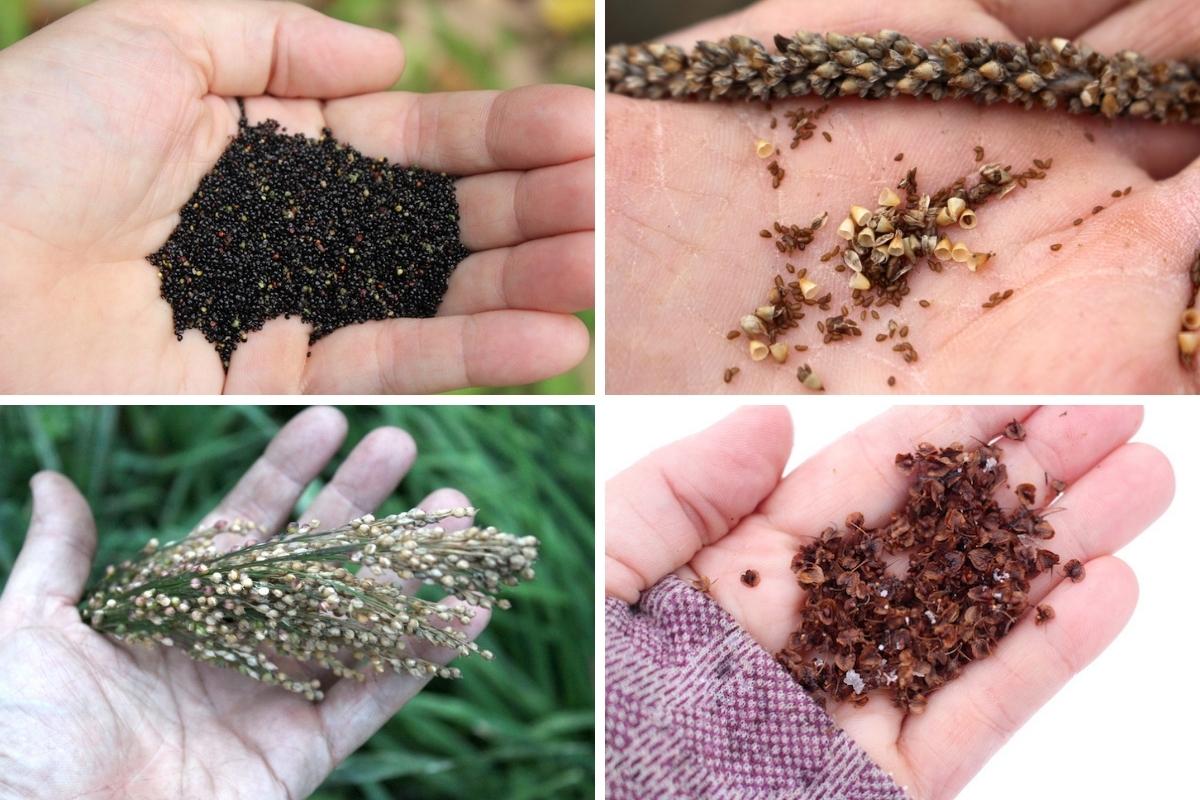
Wild Edible Pollen
If you think pollen seems like a marginal wild food source, you’ve clearly never scrubbed pine pollen off your car in the spring. Some plants are incredibly prolific, and it’s easy enough to collect pine and cattail pollen by the gallon.
Pollen is nutrient-dense, and it can be added to other dishes or used as a wild foraged flour substitute.
Some types of pollen are more for taste, and they’re only harvested in small amounts, like fennel pollen.
- Cattail Pollen (Typha sp.)
- Fennel Pollen (Foeniculum vulgare)
- Pine Pollen (Pinus sp.)
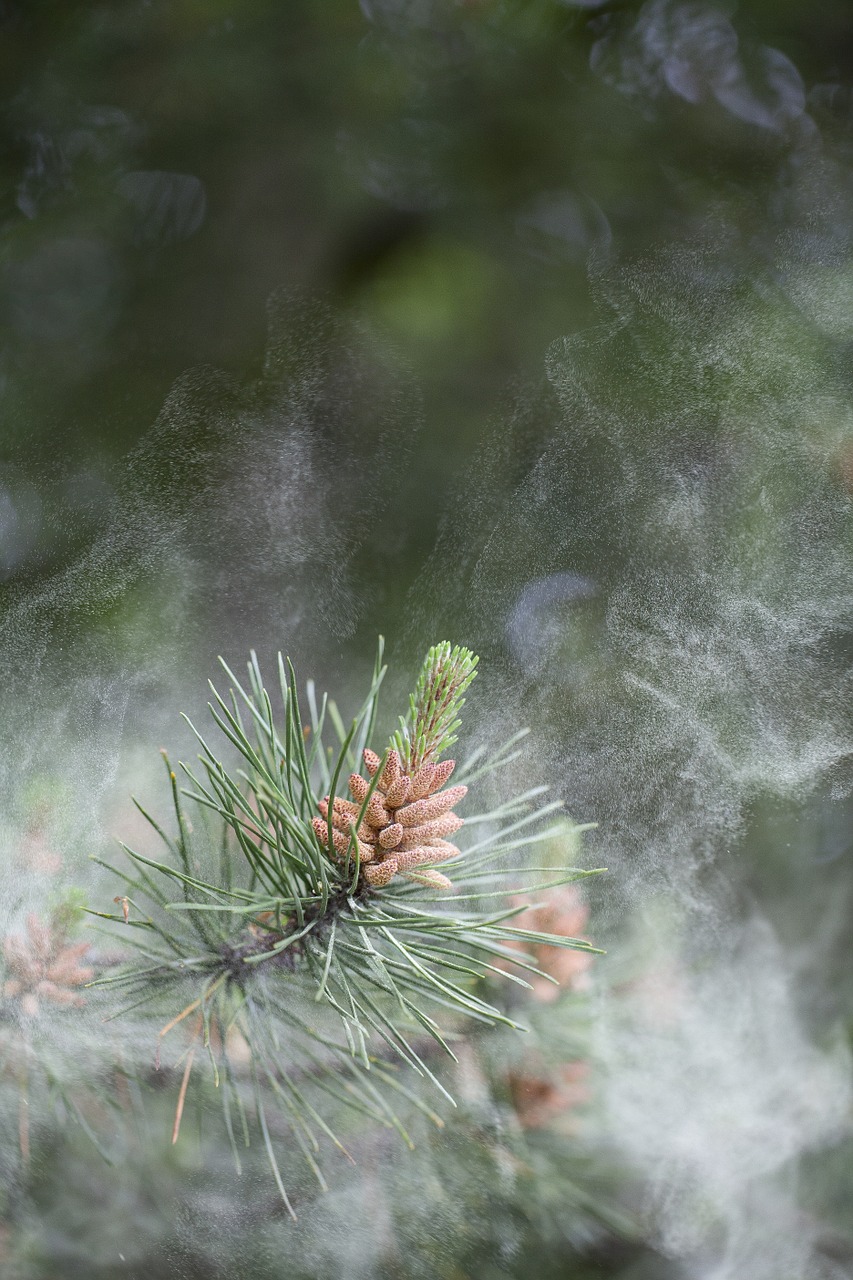
Edible Wild Mushrooms
Obviously, start with the easy-to-identify, beginner mushrooms. Once you have those under your belt, the sky’s the limit.
You can even forage more than a dozen species of mushrooms in the winter, even in cold climates like ours here in Vermont.
There are, of course, literally hundreds of edible species…and these are only some of the more common ones. Please leave me a note with any of your favorites that I missed and I’ll gladly add them to the list.
- Birch Polypore (Fomitopsis betulina)
- Bolete Mushrooms (Boletus sp.)
- Chaga Mushrooms (Inonotus obliquus)
- Chanterelles (Cantharellus sp.)
- Chicken of the Woods (Laetiporus sp.)
- Hedgehog Mushrooms (Hydnum repandum)
- Hen of the Woods (Grifola frondosa)
- Lion’s Mane Mushrooms (Hericium sp.)
- Lobster Mushrooms (Hypomyces lactifluorum)
- Morel Mushrooms (Morchella sp.)
- Oyster Mushrooms (Pleurotus sp.)
- Pheasant back Mushrooms (Cerioporus squamosus)
- Puffball Mushrooms (Calvatia sp.)
- Shaggy Mane Mushrooms (Coprinus comatus)
- Reishi Mushrooms (Ganoderma sp.)
- Tinder Polypore (Fomes fomentarius)
- Turkey Tail Mushrooms (Trametes versicolor)
- Winecap Mushrooms (Stropharia rugosoannulata)
- Witches Butter Mushrooms (Dacrymyces palmatus)
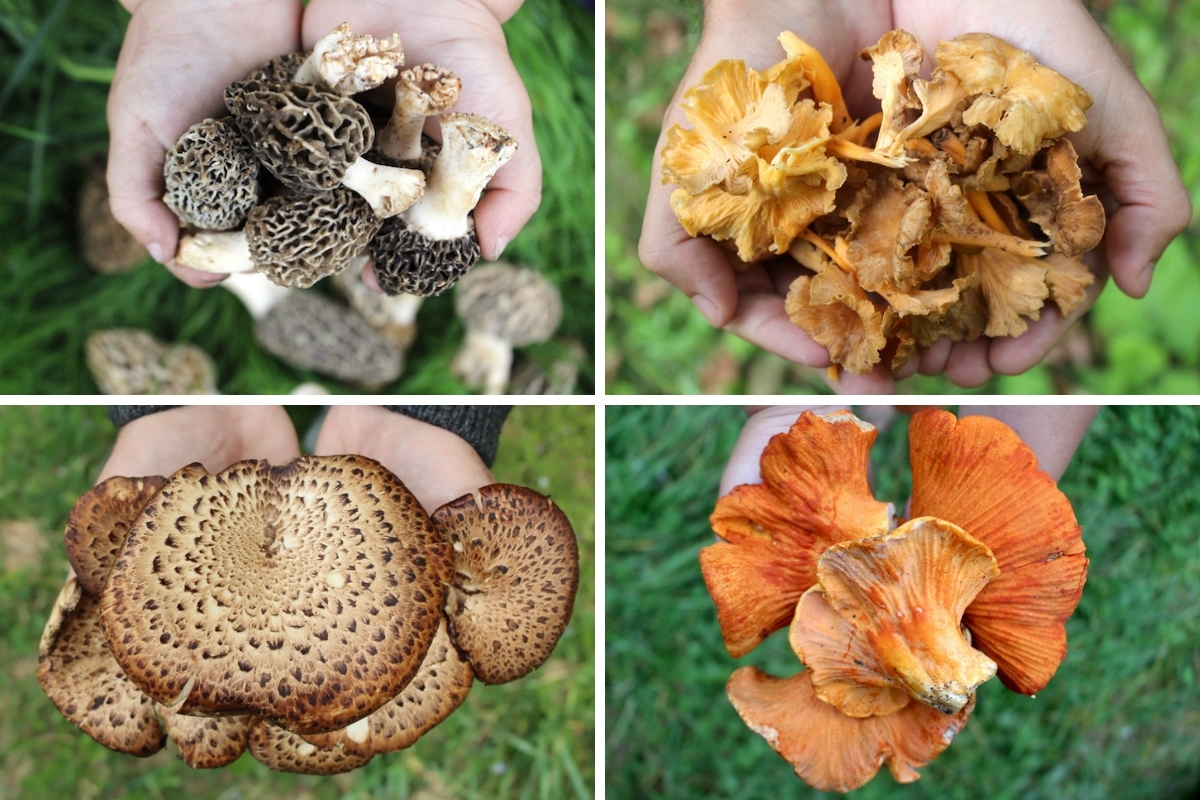
Edible Lichen
Believe it or not, there are many species of edible lichen, but just because you can eat something doesn’t mean you particularly want to.
Icelandic moss was traditionally processed with wood ash to and used to stretch flour stores during lean times. Some like Kalpasi are used as traditional seasonings. Other species are both edible and medicinal, like usnea and Wila. I’m just beginning to explore the world of edible lichen, but here’s a few for starters.
Though their names sound a bit confusing, they are all in fact lichen (not moss or flowers).
- Black Stone Flower or Kalpasi (Parmotrema perlatum)
- Horsehair Lichen or Wila (Bryoria fremontii)
- Icelandic Moss (Cetraria islandica)
- Oakmoss (Evernia prunastri)
- Reindeer Moss (Cladonia rangiferina)
- Rock tripe (Umbilicaria sp.)
- Usnea (Usnea sp.)
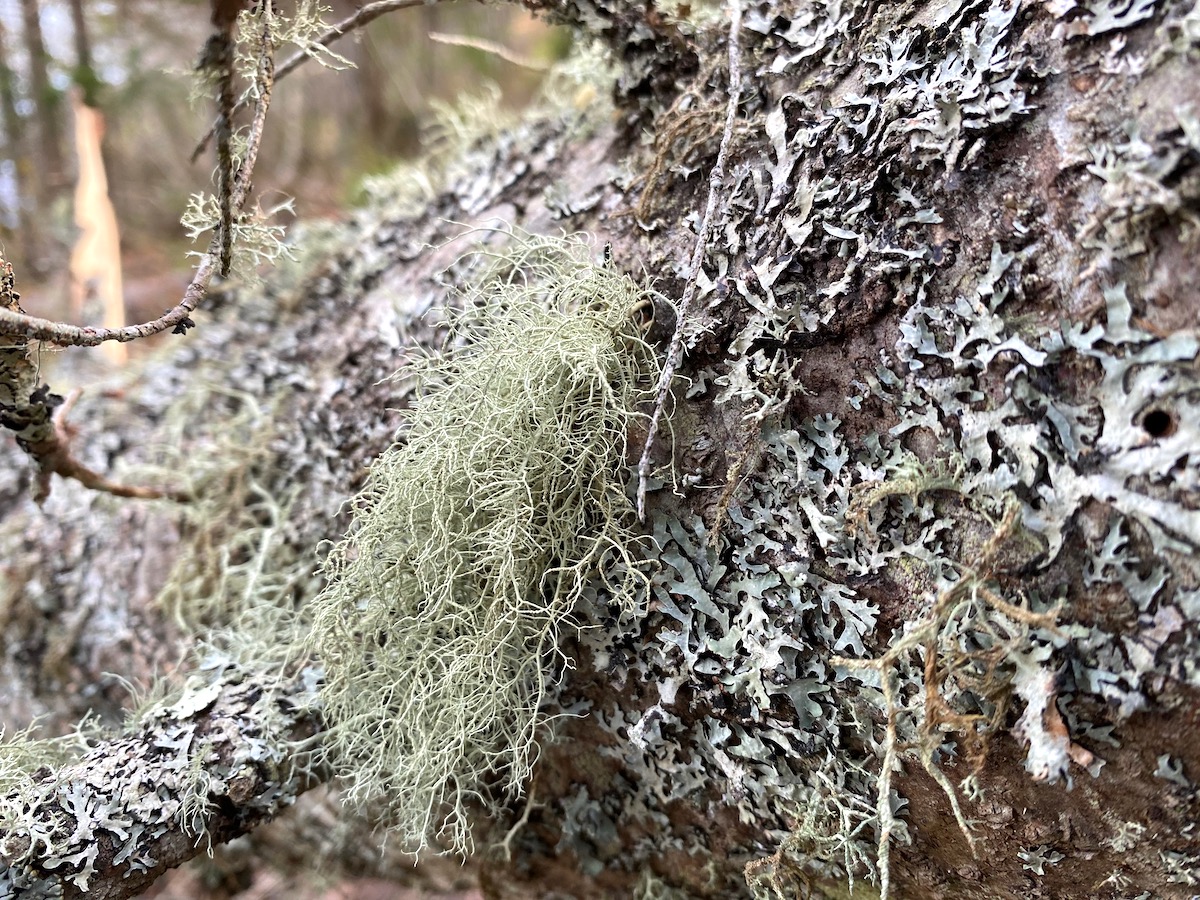
Foraging Guides and Lists
Looking for more lists of tasty wild edible plants?
- 50+ Edible Wild Berries and Fruits
- 40+ Edible Flowers (wild and cultivated)
- 20+ Edible Roots and Tubers
- 50+ Plants to Forage in Winter
- 20+ Plants to Forage in Spring
- 13+ Edible Wild Mushrooms for Beginners
- 16+ Mushrooms to Forage in Winter
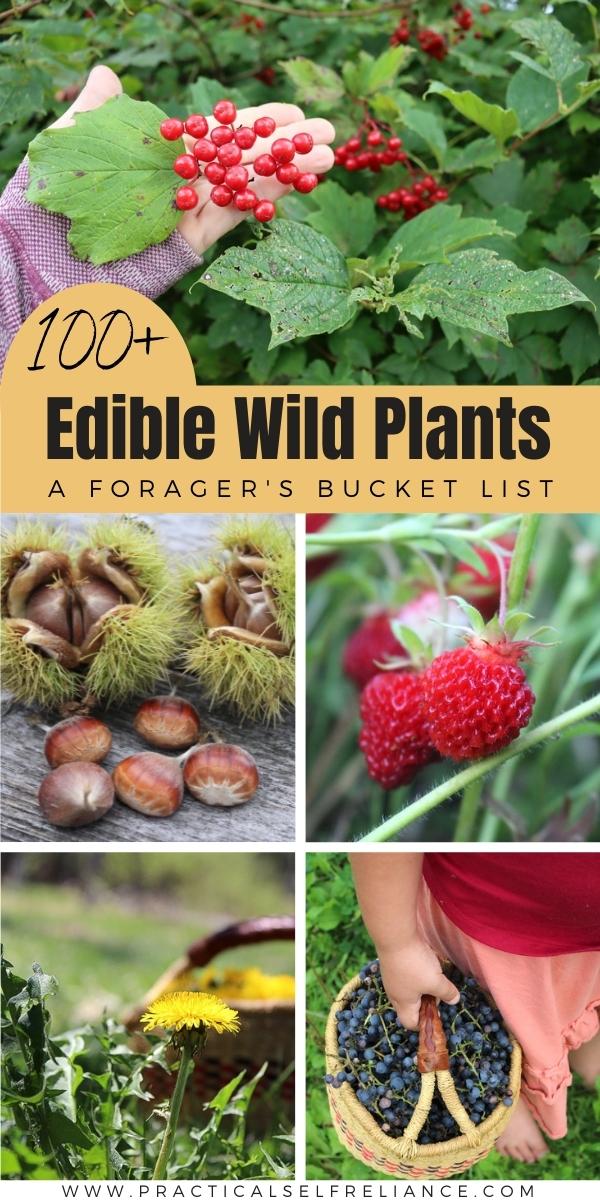














This is a fantastic list and overall a great resource!
I noticed there is an error where Arrowroot (Maranta arundinacea among others) is identified by the Latin name of Arrowhead/Wapato (Sagittaria latifolia). It is my understanding that the Arrowhead tuber is also the most commonly consumed part, though other parts of the plant are edible.
Thank you for catching that! I think autocorrect got me there, as I definitely meant arrowhead. Fixed now.
look tho I mite I could’nt find fiddle head fern, much like green beans
Don’t give up hope. You never know when you might come across some.
A lot of sources say to not eat black-eyed susan’s because they can cause really severe reactions and potentially kill people with asthma,
There is quite a bit of documentation to support the use of Black Eyed Susan. I would always advise someone with a serious medical condition like asthma to consult with their physician or a certified herbalist before using any herbs. However, there isn’t any reason why a healthy person with no allergies to this plant family couldn’t safely use this plant based on the historical use and modern day studies.
This is by-far the BEST Webpage I’ve ever found online!! Excellent! Thank you!
You’re quite welcome, I’m so glad it’s helpful to you!
Hi Ashley,I was wondering how one can grow purslane. It doesn’t grow very big in our garden. Actually it is quite small. I’ve seen pictures that were nice size purslane. I read it is good in omega 3. I am new at this. I hope you can help. And for medicinal purposes what do you know about mugwort stingy nettle and geranium. I read they are good for skin diseases. Thank you so very much. Margaret
This article has some more information on stinging nettle, geranium and mugwort. https://practicalselfreliance.com/medicinal-plants/ Purslane tends to grow best in full sun and drier soil.
There are only four types of edible chestnuts ! American, European, Chinese, and Japanese.. All the others such as American Horse Chestnut, Texas Buckeye, Red Buckeye, Painted Buckeye Yellow Buckeye, are toxic and poisonous. Every forager should be aware of the different species and be sure which are edible . There should be a detailed description and photos of leaves, fruit and bark of the toxic/poisonous ones. Maybe you could post this for us. . To avoid any possible poisoning of good foraging folks and their families . Thanks for your great info and recipes ! FYI
Hi Ashley, I really enjoy your website! Here is an idea for your list which I discovered last year. Young male spruce cones before they open to release pollen in early spring. They are beautiful red, and deliciously starchy!
That’s a great tip. Thanks for sharing.
Do you have a book that is available?
I’m sorry but we do not have any books available at this time. Here is a great post with all of our favorite books for self-reliant living. https://practicalselfreliance.com/books-for-self-reliant-living/ There is a whole section for books about foraging.
What a wonderful post. Thank you so much for this. Now I ‘m a disabled senior who will not be able to go foraging beyond the backyard but I went out today a bit along with you thanks to your efforts. I am sure I will make return trips. I hope you’re writing a book.
That’s wonderful. I am so glad you were able to get out, even if it’s just in your backyard.